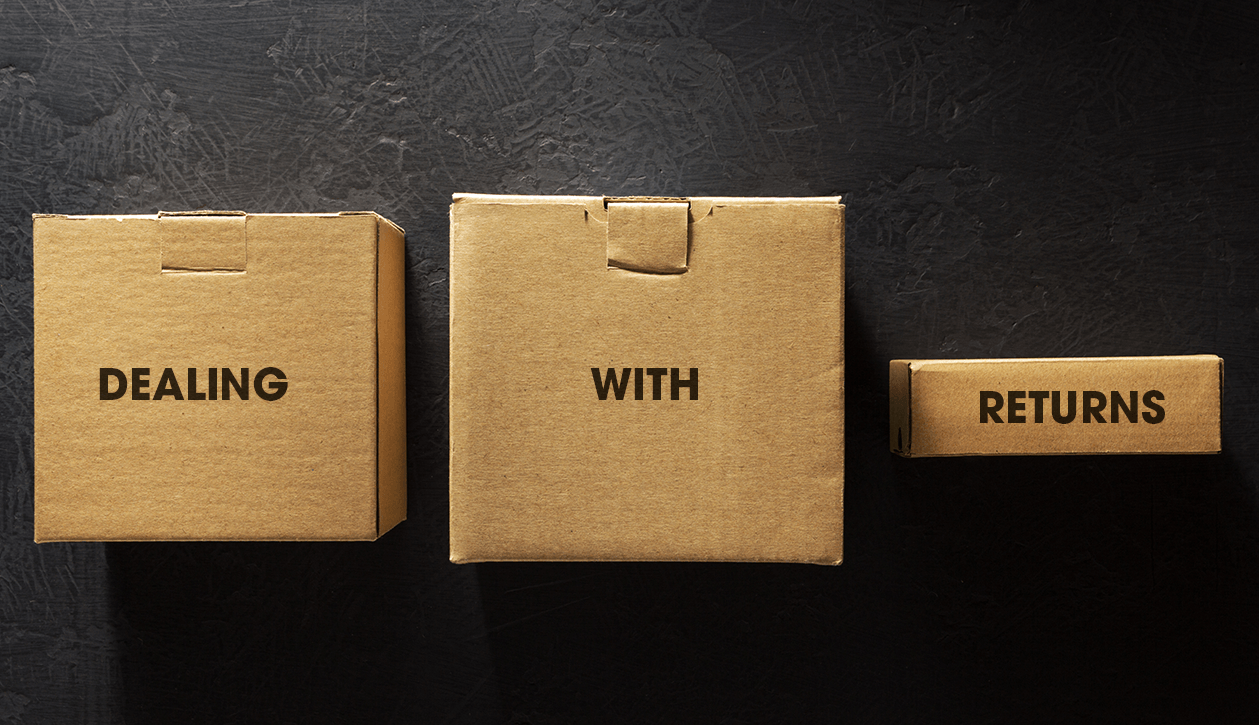It’s an amazing feeling you get when your new dropshipping store starts having success for the first time. The sales are rolling in and you’re constantly refreshing your orders page to see all the beautiful new orders coming in.
Finally, you see your hard work paying off. I’ve been there and it's kind of like you’re flying with a constant urge to randomly shout for joy and pump your fist in victory.
And then it happens. It always seems to happen, even with the best products out there.
One of your first customers sends you an email requesting a refund and to return their item.
Oh no, you spent all your time focusing on how to sell your products you didn’t think through what to do when the time comes when someone wants to return or exchange their product.
Have no worries though, some simple planning will make your returns process a piece of cake… well, it might be a piece of stale fruit cake because let’s be honest, no one likes dealing with dropshipping returns.
Working With Your Suppliers Dropshipping Returns Policy
The first step in creating a rock-solid return policy is contacting your suppliers and figuring out their dropshipping returns policy.
Super simple right? You’d be amazed at how many people miss this important step.
It doesn’t matter if you’ve found a supplier on AliExpress or have a direct connection with a company shipping from the US, each will have different return policies. Some may offer 10 day return periods and others 60 days.
Each product category can be a little different as well, so make sure you find out what can and can’t be returned. For example, a clothing company might accept returns for all clothing except underwear (ugh, that wouldn’t be fun being the person processing used underwear).
It’s best to understand up front what their policies are and if you can have customers send returns directly back to them.
Determine Where Returns Will Be Sent
Now that you know how your suppliers handle dropshipping returns, you need to decide what makes the most sense for where you want your customers to return products.
If your customers are in the US, you’re located in the US, and your supplier is in China, it probably makes the most sense to have your customer's ship returns directly to you (unless you have really large products like furniture).
Oh, you don’t want to give out your home address to your customers? There is a simple two-step solution for this.
- Rent out a PO Box, either at a postal store nearby or through USPS. I’d recommend a postal store if there is one around as it’s easier to get packages from multiple carriers. Prices will vary depending on where you live, but for $10-$20 a month, you can get all your returns sent to one secure location. They not only give you your own business address but they also give your business a little more credibility as people do pull up Google Maps images to check where your business is located.
- Next is a super important tip that will not only decrease the number of returns you get, but alleviate a lot of headaches.
Ready for it?
Never post your return address on your website. Make people contact you first before giving it to them. You’d be amazed at how many random returns show up from people who never contact you. You then have to try to track them down and figure out why they returned it, if they want an exchange, their order info, if they are even in the return period, etc.. It’s a hassle.
If you make them contact you first, it’s much easier to organize returns and will save you, and your customers, a lot of headaches.
Create Your Return Policy
Next up you need to write a solid return policy and post it easily visible on your site. How you create it is up to you, but here are a few tips.
Base It Off Your Suppliers Policies
Let’s say you decide to have returns sent directly to a supplier who has a 30-day return policy. Set your policy slightly shorter for your customers so you have room for error. I’d do something like 20 days.
Clearly State Who Pays For Return Shipping
It’s important to let your customers know if they are on the hook for paying return shipping. Once again, this is your choice and will all come down to your brand.
If you’re selling high-end goods, it might be worthwhile to offer free return shipping (where you pay for it) as it will help increase your front end conversions.
However, when you make customers pay for the shipping back, you will get fewer returns as a lot of people don’t want to deal with it. This may deter some customers from becoming repeat buyers (although I don’t think very many), but will also save you a lot of money.
Deliver Great Customer Service
As you’re building your business it’s important to give your customers a great experience. Part of that means not always following your return policies and giving a little wiggle room to keep people happy (trust me, people will write negative reviews any chance they can…. Don’t give them that chance).
In my last e-commerce company, I ran a custom apparel business. We had a customer who asked for a size exchange, even though it was a few months after our policy stated we’d accept returns. They explained that their husband has passed away and hadn’t gotten around to exchanging it for a different size. Whether they were telling the truth wasn’t up to me to decide, but we made sure to offer her a free exchange, sent her out her new shirt along with a second shirt for free and a handwritten note.
Don’t get too caught up if their return comes in on day 31 and you have a 30-day policy. Give them a refund and move on.
Great customer service leads to repeat buyers. Repeat buyers pay the bills.
Broken or Damaged Items
Hopefully, you’ve found a good supplier who has quality products and spends the time to ship them properly and you’ll have very little items arrive broken or damaged.
However, when customers write in letting you know they received a damaged item, I suggest you get them to send a picture of it, as well as the packaging to help identify the problem. Then contact your supplier right away to get them to send a replacement.
In this case, the majority of the time just let the customer keep the original and not worry about sending it back. The exception to this would be if you’re selling high-end electronics or something similar that can be salvaged and it’s worth it to get the item back. If this is the case, it’s best if you pay for the shipping back.
How To Manage Returns
Managing returns can be a bit of a mess as you grow unless you stay organized.
First, I’d highly suggest using a good customer service software such as Help Scout, ZenDesk, Gorgias.io, or something similar. Most of these software allows you to tag conversations so it’s easy to track returns.
Next, when you’re first starting out, I’d go super basic and just create a spreadsheet in Google Docs or Excel with all of the customers' information for each return. Give each return an RMA number (just make a unique one up for each customer) and have them include it in the package. This will allow you to align up the return with the order. If your returns are going back directly to your supplier, most suppliers will provide this number for you.
As you progress and get higher order volumes, your return volume will likely increase and it might be time to outgrow that spreadsheet. I’d then suggest using a returns app, such as Return Magic if you’re on Shopify.
These allow for a lot of cool features that make handling returns so much easier.
Returns Are Normal
Just remember every e-commerce business out there has to deal with returns and exchanges. It’s never fun, but you’re not alone. Make sure to carve out a little time and plan your policies and processes if you haven’t yet.
When one of your products hits and the orders come flooding, you’ll be thankful you planned in advance. That time should be spent celebrating your success and not worrying about figuring out what you’ll do with the returns.
Let us know your biggest pain points when dealing with dropshipping returns in the comments below.



